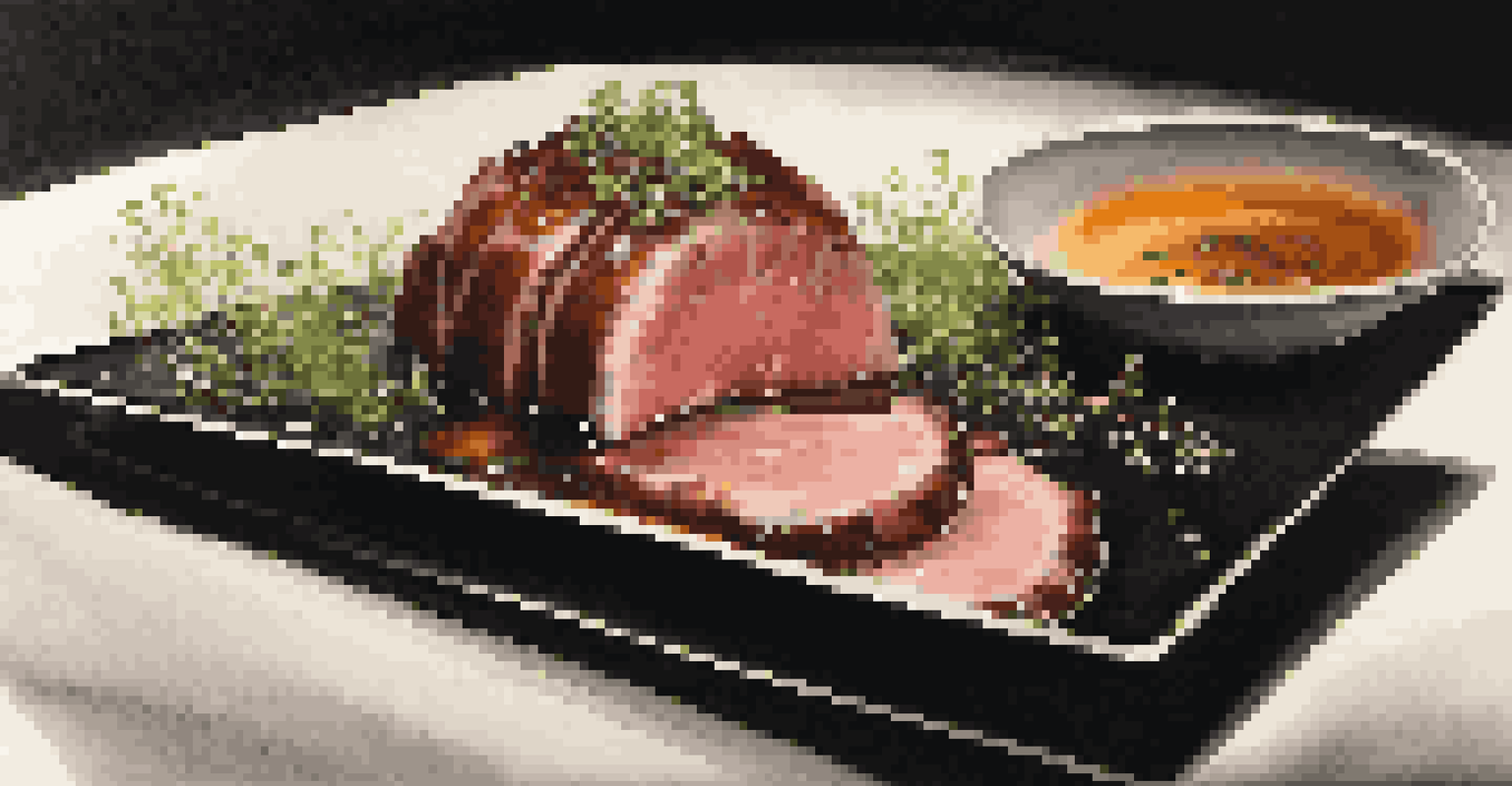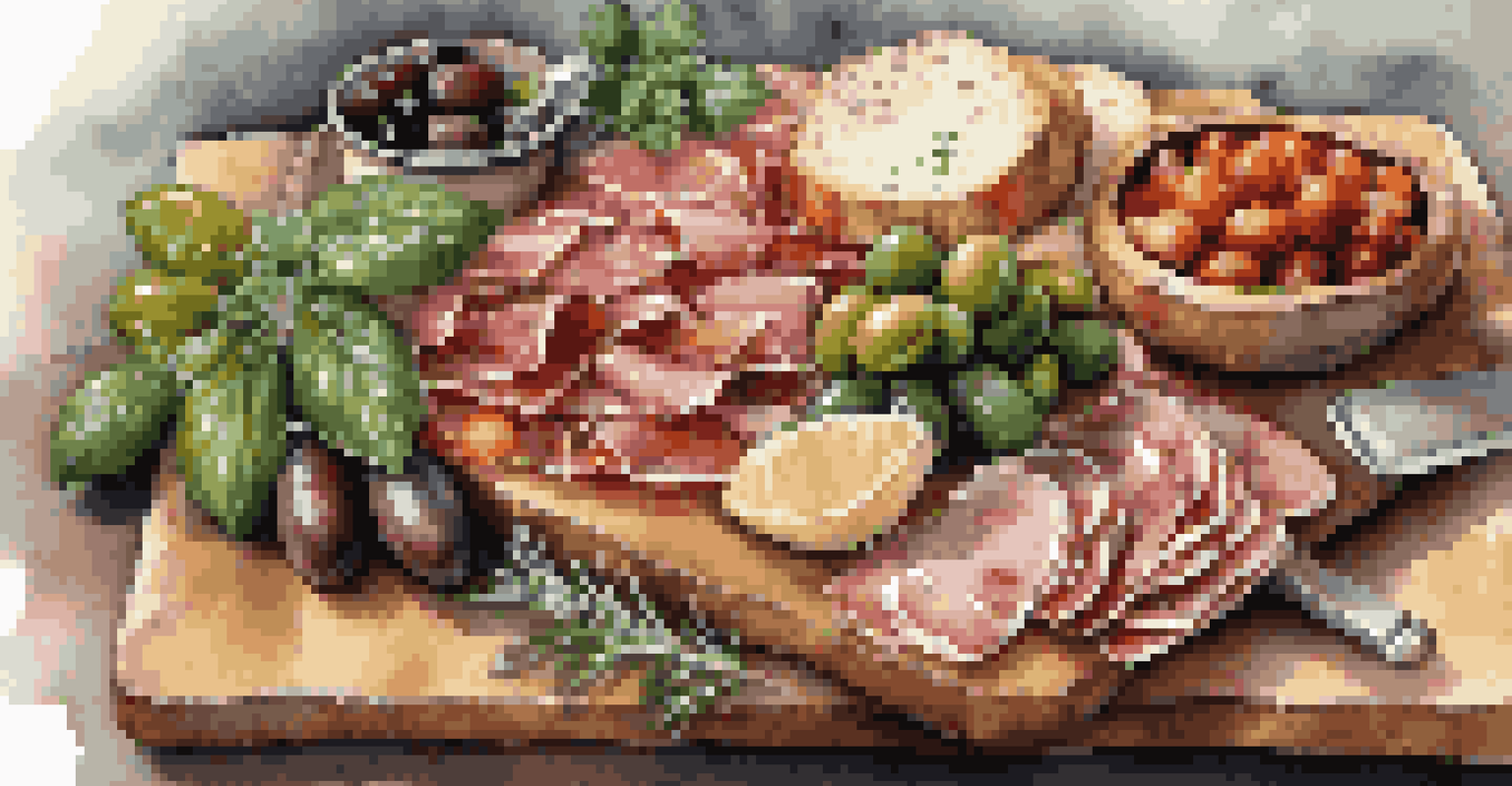The Art of Plating: Culinary Tours Focused on Presentation

Understanding the Importance of Plating in Culinary Arts
Plating is not just about making food look pretty; it's an essential part of the dining experience. The way a dish is presented can enhance flavors and stimulate the appetite even before the first bite. Think of plating as the first impression—like a book cover that entices you to read what's inside.
Good food is all about presentation. It is the first thing that people notice and it can influence their perception of taste.
A well-plated dish tells a story, guiding the diner through textures, colors, and flavors. For instance, a vibrant beet salad topped with creamy goat cheese creates a visual contrast that entices the eyes. This is where culinary tours often emphasize the aesthetic aspect, teaching participants how to elevate their dishes through thoughtful presentation.
Moreover, plating can reflect cultural identities and traditions. Different regions have unique styles of presentation, from the intricate designs of Japanese kaiseki to the rustic charm of Italian antipasto. Understanding these nuances can deepen one's appreciation for global cuisines.
Culinary Tours: An Immersive Experience in Food Art
Culinary tours offer a unique opportunity to dive deep into the world of food, particularly the art of plating. Participants can learn from chefs who specialize in this craft, gaining hands-on experience that goes beyond just cooking. Imagine visiting an Italian villa, where you not only learn to make pasta but also how to plate it like an expert.

These tours often include workshops and demonstrations where chefs showcase their plating techniques. Attendees can watch in awe as a simple dish transforms into a work of art with just a few strategic garnishes. This immersive experience allows for a deeper understanding of how each component contributes to the overall presentation.
Plating Enhances Dining Experience
The way food is plated not only makes it visually appealing but also enhances flavors and stimulates the appetite.
Additionally, culinary tours often highlight the importance of local ingredients in plating. By sourcing fresh, seasonal produce, chefs can create visually stunning dishes that celebrate the region’s flavors. This not only enhances the dish's appeal but also supports local farmers and promotes sustainability.
The Elements of a Well-Plated Dish
Creating a stunning plate involves various elements, including color, texture, and composition. Chefs often choose a color palette that complements the dish, using contrasting colors to draw attention. For example, a bright green pesto can beautifully contrast with a white plate, making the dish pop visually.
The plate is a canvas, and the food is the paint. Presentation is an art in itself.
Texture plays a crucial role as well; incorporating crunchy, creamy, and smooth elements can intrigue diners and create a multi-sensory experience. Think about a dish featuring crispy fried onions atop a silky, rich soup—this combination not only looks appealing but also creates a delightful mouthfeel.
Finally, composition is key to achieving balance on a plate. Chefs carefully consider the arrangement of each element, whether it's a central focal point or a more scattered approach. The goal is to create a harmonious visual flow that guides the diner’s eye across the plate, enhancing the overall dining experience.
Seasonal Ingredients: A Canvas for Plating
Using seasonal ingredients not only enhances flavor but also elevates the visual appeal of dishes. Fresh, in-season produce tends to be more vibrant in color and rich in texture, making them ideal choices for plating. For instance, ripe summer tomatoes can add a burst of red, while winter squash can provide a warm, earthy hue.
Culinary tours often highlight the significance of seasonality, encouraging participants to experiment with local ingredients. This practice fosters creativity, as chefs can adapt their plating techniques to showcase what’s available at the moment. A dish featuring spring asparagus, for example, can be plated in a way that highlights its crispness and vibrant green color.
Culinary Tours Teach Plating Skills
Culinary tours provide hands-on experience in plating techniques, allowing participants to learn from expert chefs and elevate their culinary artistry.
Moreover, the connection to seasonal ingredients can tell a story about the region and its culinary heritage. By understanding the seasonal cycle, chefs can create dishes that resonate with diners, making the meal not just about food, but about a shared experience of culture and place.
Culinary Techniques That Enhance Presentation Skills
Learning specific culinary techniques can significantly improve one’s plating skills. Techniques such as sous-vide cooking, emulsion preparation, and espuma creation can elevate a dish's aesthetic and flavor profile. For example, sous-vide allows for precise cooking, resulting in perfectly tender meats that can be plated with elegance.
Additionally, mastering the art of sauces and garnishes can add a finishing touch to any dish. A beautifully drizzled sauce or a sprinkle of microgreens can transform a simple plate into a gourmet masterpiece. Culinary tours often include lessons on these techniques, enabling participants to refine their skills.
These culinary techniques not only enhance presentation but also encourage innovation. Chefs often experiment with new methods to push the boundaries of traditional plating, resulting in unique and memorable dish presentations that leave a lasting impression on diners.
The Role of Cultural Influences in Plating Styles
Plating styles are heavily influenced by cultural traditions and practices. For instance, French cuisine is known for its meticulous attention to detail, often featuring elegant arrangements and delicate garnishes. In contrast, a more rustic approach might be seen in Mediterranean dishes, where ingredients are served in a more abundant and less structured manner.
Culinary tours often expose participants to a variety of cultural plating styles, allowing them to appreciate the diversity of food presentation. Learning about these differences can inspire creativity and encourage individuals to incorporate elements from various cuisines into their own plating techniques.
Seasonal Ingredients Inspire Creativity
Utilizing fresh, seasonal ingredients in plating not only enhances visual appeal but also connects diners to local culinary traditions.
Understanding cultural influences also fosters a greater respect for the culinary arts. By appreciating how different cultures approach plating, chefs can create dishes that honor traditional methods while adding their personal flair, resulting in a beautiful fusion of styles.
Tips for Home Chefs: Mastering Plating Techniques
For home chefs looking to elevate their plating skills, starting with a few simple tips can make a significant difference. First, invest in quality plating tools, such as squeeze bottles for sauces or tweezers for delicate garnishes. These tools can help create precision in presentation, making it easier to achieve professional-looking results.
Experimentation is key; don’t be afraid to play with different colors, textures, and arrangements. Try creating a color wheel on your plate or layering ingredients to add depth and interest. Remember, the goal is to have fun while exploring your creativity in the kitchen.

Lastly, take inspiration from culinary tours and professional chefs. Follow social media accounts or watch cooking shows that focus on plating techniques. Observing how experts present their dishes can spark ideas and motivate you to try new approaches at home, transforming your meals into works of art.